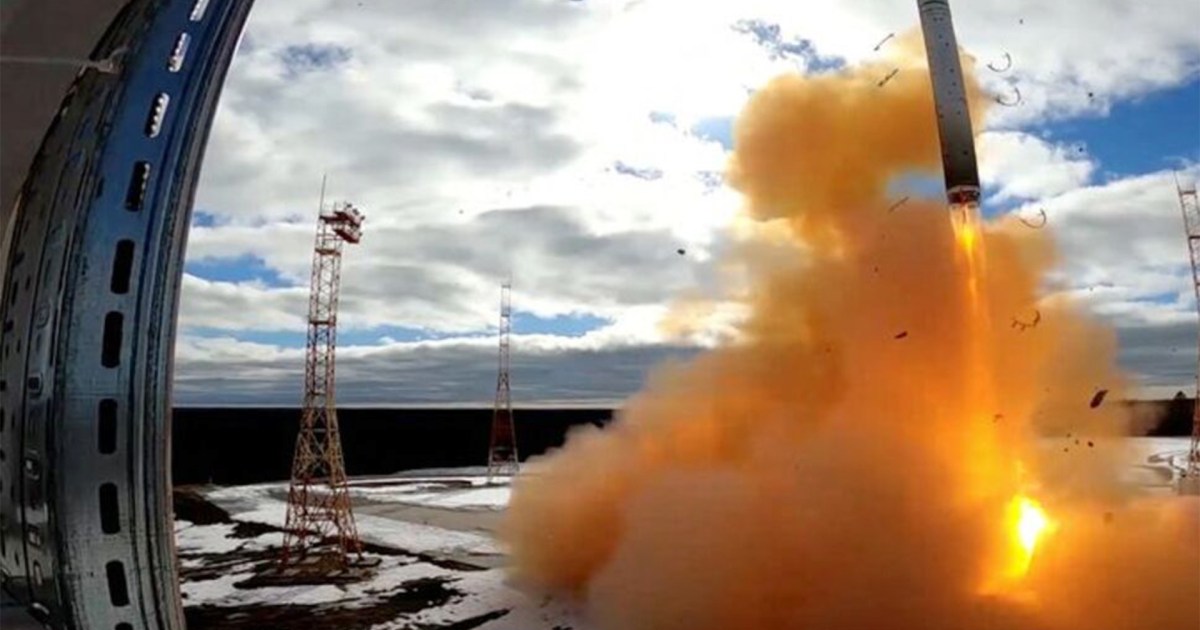A Russian nuclear intercontinental ballistic missile that Moscow says could wipe out most of the United Kingdom or France, and Russian President Vladimir Putin said Tuesday, June 21, 2022 that it will enter service by the end of the year.
Creation and development
The Russian Sarmat missile received the authorization of military authority in 2011, and it was classified among the weapons of the Russian Strategic Missile Forces and became an alternative to the "Vovoda" or "Satana" (Demon) missile.
The "Sarmat" - an RS-28 model - replaced the RS-36M missile from the 1970s, which NATO calls the "devil's missile".
According to the Russian Makeyev Center for Missile Design, the start of work on the Sarmat missile was based on the government's decision on defense contracts for 2010 and for the 2012-2013 planning period.
Properties
The missile weighs about 100 tons, and has the ability to carry a nuclear payload of 10 tons, and with this payload it can cause an explosion 2,000 times more powerful than the atomic bomb dropped on the Japanese cities of Hiroshima and Nagasaki in 1945.
The Sarmat - also called the "King of Missiles" by the Russians - is liquid-fueled, fired from platforms hidden underground, and the power reserve allows the missile to fly across the north and south poles.
The Russian "Sputnik" news agency reported that the missile has a new technology of its kind that differs from any missile defense system, and said that one of the advantages of Sarmat is that it is light in weight, and has a flight range of more than 11,000 km.
The Sarmat missile can be equipped with between 7 and 10 nuclear warheads, with independent guidance, capable of maneuvering in the air, and flying at subsonic speeds and above.
The Devil 2 is distinguished by its ability to change altitude, direction and speed, and has a high level of active protection in the form of anti-missile and air defense systems, and a high level of security fortifications.
Russian military officials say the Sarmat is a heavy liquid-fueled missile that cannot be intercepted by current air defense systems.
The first launch of the rocket took place from the Plesetsk cosmodrome in the Arkhangelsk region on April 20, 2022.
The Ogorsky missile unit in the Krasnoyarsk Territory is preparing to arm the main missile regiment with the new missile system.

